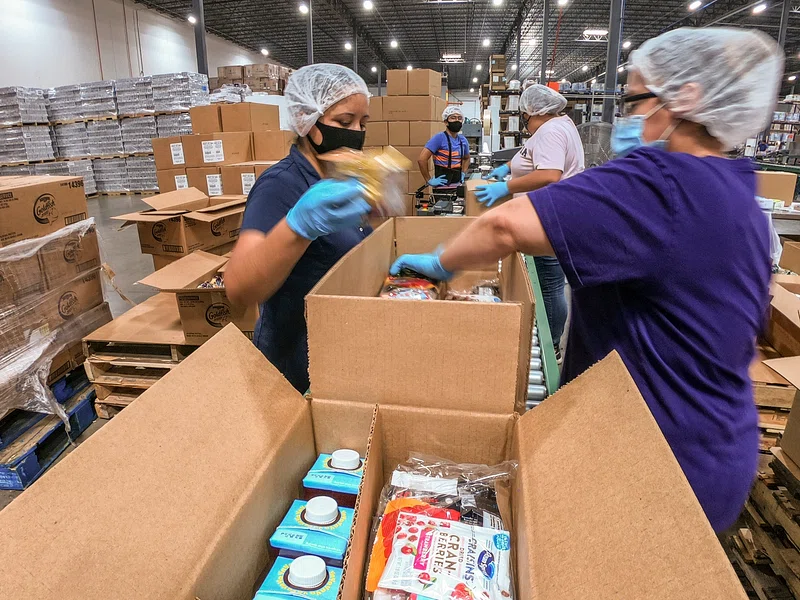Logistics of food distribution are an essential part of the industrial process. From the point of manufacturing to the point of sale and the end user, it is in charge of guaranteeing the integrity and food safety of the products.
By taking care of things like temperature regulation, light exposure, and impact prevention during transportation, each item—especially the more perishable ones—lives longer and the rate of product loss is decreased.
Learn the essential steps in this article to improve the logistics of food delivery and reap significant business advantages.
Read also: 7 Inventory Management Mistakes You Must Avoid to Boost Efficiency
Importance of food distribution logistics
Certainties unique to the food industry are absent from other economic sectors. The perishability of your products is the most crucial factor among them. To ensure quality and integrity at all times, more caution is needed even for projects with longer timelines.
Let’s begin with explaining the concept of food distribution logistics and subsequently discuss its significance for businesses.
What is food distribution logistics?
The procedure that starts when the product is finished on the production line and ends when it reaches the points of sale is known as food distribution logistics. Included in it are the following:
- finished product packing;
- stock and warehouse storage
- loading for transport;
- transport itself;
- unloading at the destination.
There is a risk to food associated with each of these steps. The manufacturing company bears the responsibility of ensuring appropriate storage and transportation, either through in-house resources or by partnering with other firms.
Why is food logistics so important?
The arrival of a factory’s products at points of sale determines how profitable it is. To retain their market value, they must retain their original qualities.
In certain cases, they may sustain severe harm that compromises the safety of food. In these situations, the business suffers losses because they are no longer able to be sold.
5 steps to ensure more efficiency in your company’s food logistics
Now that you are aware of what food distribution logistics is and how crucial it is, check out our step-by-step guide with recommendations to improve the efficiency of your operation.
1. Use the correct packaging
Food is shielded from its surroundings by its packaging. It is imperative for producers to address all packaging aspects related to the logistical process, rather than just the packaging that final consumers see.
There are 5 levels in total:
- The primary level is the one that comes into direct contact with the food and determines the consumption unit.
- The secondary level groups primary packaging to make handling larger quantities easier.
- Tertiary-level packaging involves multiple secondary packaging units and uses stronger, more resistant materials like cardboard and wood.
- Quaternary-level packaging joins tertiary packaging to make storage and transportation easier.
- Lastly, the fifth level is used for shipments that are farther away and typically consists of containers.
Food’s physical and chemical properties must be preserved at each of these levels, even amid exposure to the elements, wind, sun, temperature change, and impacts sustained while traveling.
2. Bet on barcodes
In order to streamline the logistics distribution process, technology must be employed. The key takeaway from this is to depend on the barcode. It makes it possible to automate several processes, including those that involve the use of AI and autonomously driven machinery.
It not only expedites the process but also reduces human mistake errors and enhances inventory, loading, and transportation controls. As a result, the business becomes more profitable and productive.
3. Keep the place sanitized
A key consideration for the food industry is hygiene. Let’s start with adhering to the legal requirements in place for health surveillance. By doing this, fines and other penalties that may even result in the suspension of business operations are avoided.
Even more crucial is the fact that maintaining modern hygiene practices helps your business prevent food contamination. This produces high-quality goods that don’t endanger customers.
Thus, legality and quality are the two benefits that are directly related to this problem. These two elements work together to create the company’s reputation in the marketplace, which is one of the most important elements in determining a business’s success.
4. Minimize the impacts of the transportation process
The logistics of food distribution are most crucial during the transport phase because this is when it gets harder to control outside intervention. To ensure optimal product preservation, an air-conditioned environment that adjusts temperature, light, and air circulation can be installed in a stock room or warehouse.
Whether transported via truck, train, airplane, or even ship, food is subjected to substantial movements as well as variations in temperature and ventilation. As a result, some of them will need particulars like refrigeration or packaging that reduces physical effects.
5. Pay special attention to perishables
Foods that spoil quickly require specific handling. They need special attention because they are more sensitive and lose quality more quickly.
For example, traditional or organic agricultural products like fruits and vegetables must be transported faster. Refrigerated cars are necessary for products like meat and dairy.
The advice of the relevant nutritionist is valid for industrialized goods like bread, salty snacks, and prepared meals. To put it briefly, the most crucial thing is to make sure that the conditions are as similar as feasible to those that would be used in a typical warehouse or stock.
As we have seen, maintaining the integrity of production up until it reaches points of sale requires careful consideration of food distribution logistics. In addition to increasing quality, this prevents losses during the process.
By doing the actions outlined in this article, you can make this problem much easier to overcome and increase the likelihood that your company will expand and stand out in the marketplace.



